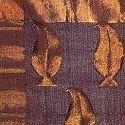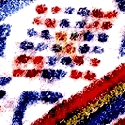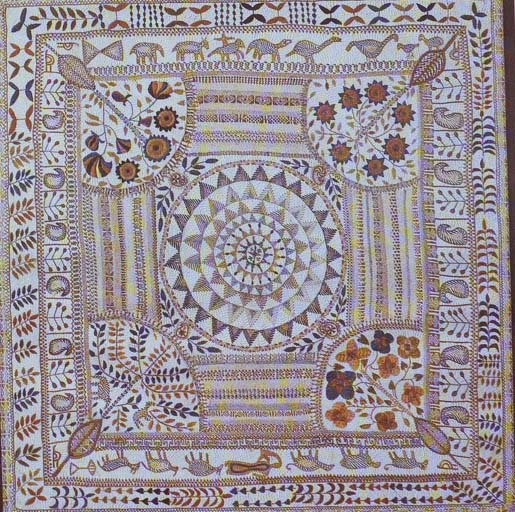
Saris/Unstitched Garments, Textiles, Weaving, Spinning, Khadi
Cotton Jamdani Venkatagiri Weaving of Andhra Pradesh
Venkatagiri saris are woven with locally made jalas and are among the best examples of the jacquard weave. The weaving is fine and the body of the sari is in sheer cotton, ornamented with gold motifs like dots, coins, leaves, parrots, or simple geometric designs.
This saree is woven in the small town Venkatagiri, situated about 60 km away from Nellore in Andhra Pradesh. It is woven with fine 100’s cotton yarns in both the warp and weft. Zari is used for the pallu and border. Jacquards are used to weave the extra weft designs. Generally, soft and pastel colours are used in the sarees. They are woven on a traditional fly shuttle pit looms. Their speciality lies in the sizing of the warp and weft yarns.
Earlier patronized by the Nizam’s, the erstwhile rulers of Hyderabad and the royalty and landed gentry of the surrounding areas the weavers produced the valued muthupatachirestyle with its pale white body and solid kaddizarianchu/ gold borders in fine counts of 200. While carrying on the tradition the Venkatgiri weave has moved to color borders with or without gold.
Woven on a pit-loom the chelnetha/ muvvaninetha or the closed-shed technique that can achieve an equal number of ends and picks in the ground resulting in soft and durable weave is used. Today, in competition with Uppada saris, Venkatgiri has also introduced weft patterning in the body and end-pieces to gain an edge in the market. These supper fine cotton saris continue to be embellished with gold thread with a narrow or wide border in gold.
Gallery
YOUR VIEWS
PRACTITIONERS: INDIA
Access 70,000+ practitioners in 2500+ crafts across India.
BIBLIOGRAPHY
10,000+ listings on arts, crafts, design, heritage, culture etc.
GLOSSARY
Rich and often unfamiliar vocabulary of crafts and textiles.
SHOP at India InCH
Needs to be written.





